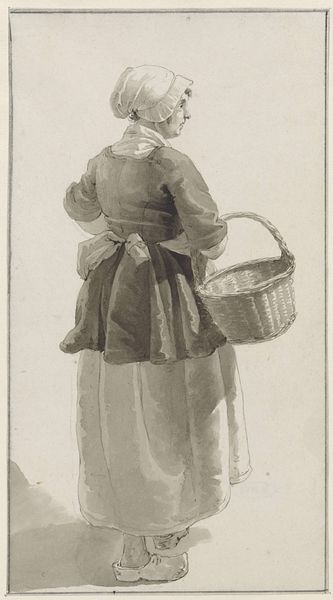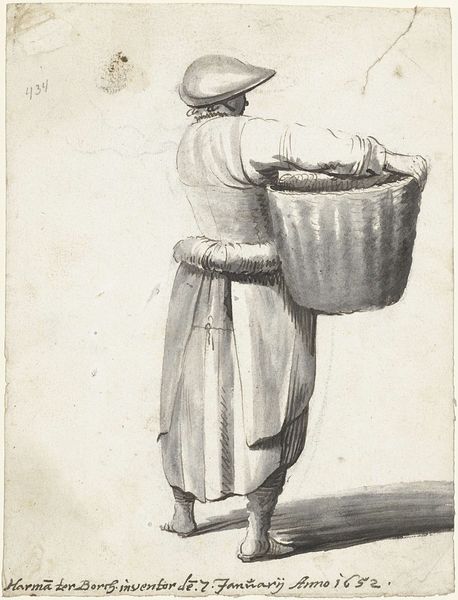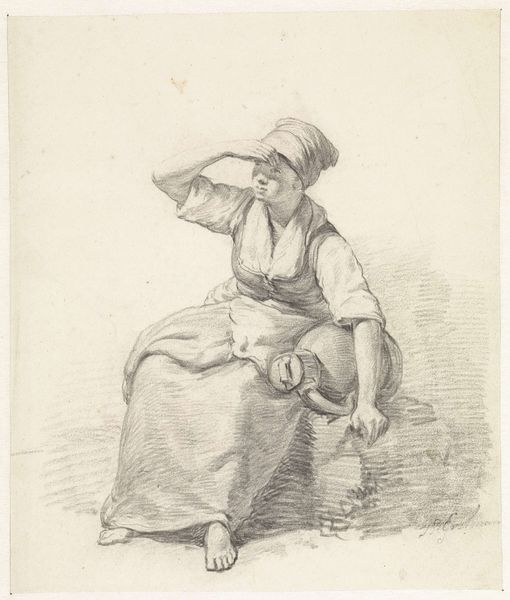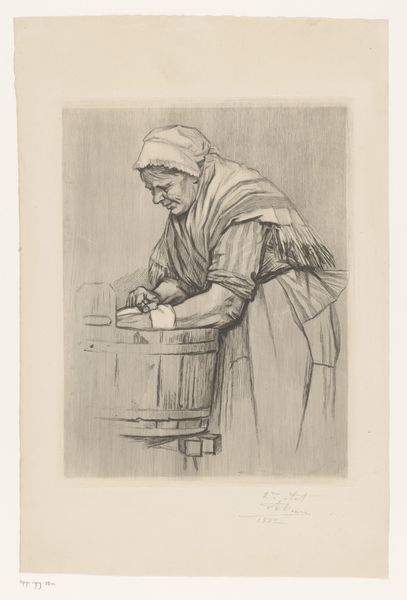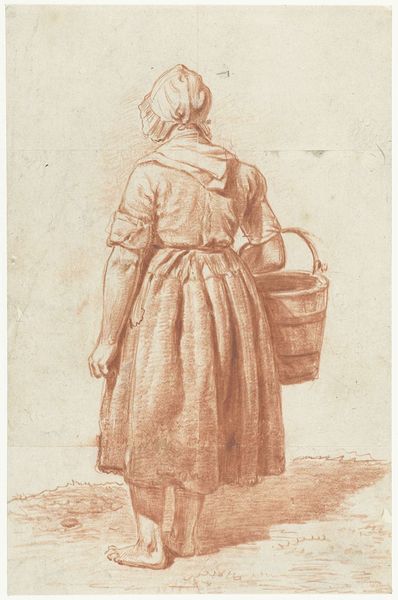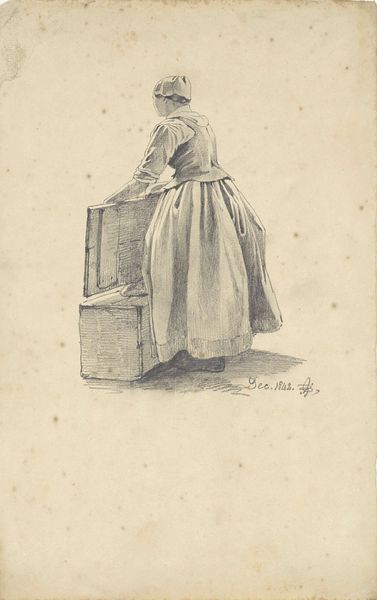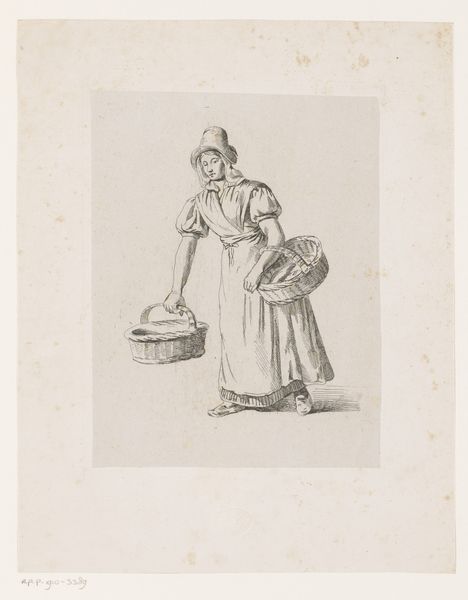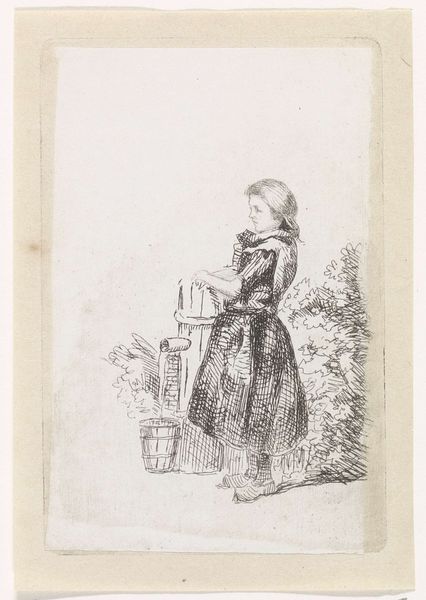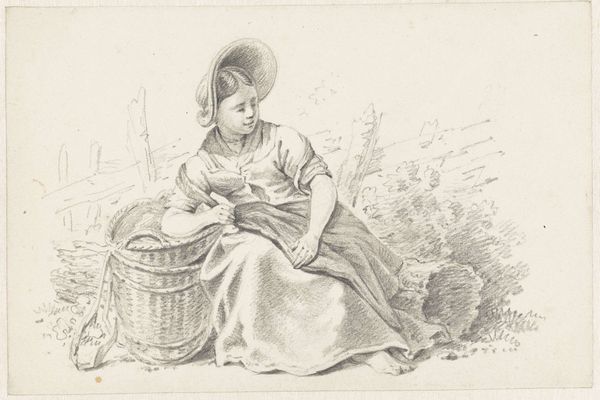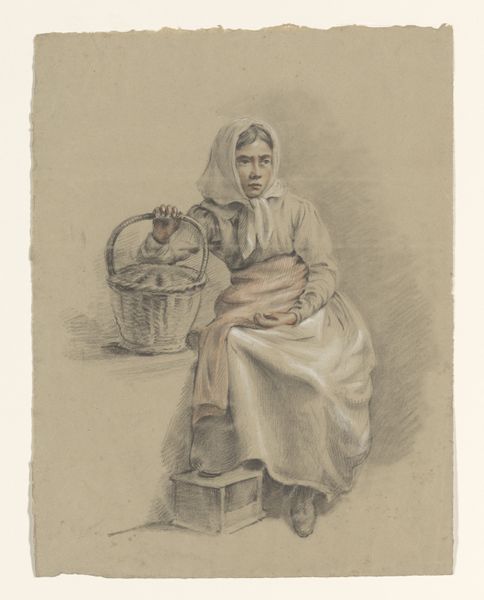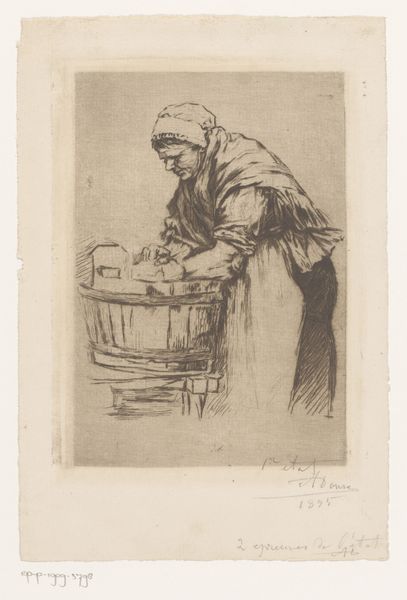
Staande jonge vrouw, met de armen rustend op een mand Possibly 1820
0:00
0:00
drawing, pencil
#
portrait
#
pencil drawn
#
drawing
#
pencil sketch
#
charcoal drawing
#
figuration
#
pencil drawing
#
pencil
#
pencil work
#
realism
Dimensions: height 327 mm, width 240 mm
Copyright: Rijks Museum: Open Domain
Editor: This drawing, "Standing Young Woman, with her Arms Resting on a Basket," possibly from 1820 and created by Abraham Johannes Ruytenschildt using pencil, has an interesting delicate quality to it. What catches my eye is how both the woman and the basket are rendered with so much care and attention. What do you see in this piece? Curator: For me, it's fascinating to consider this drawing through the lens of material culture and labor. Notice how much detail is given to the basket. Baskets, at that time, weren't simply containers; they represented a whole economy tied to gathering, agriculture, and domestic labor, typically women's work. Editor: So, you're saying the basket is more than just an object in the background? Curator: Precisely! Think about the process of making a basket – the gathering of materials, the weaving, the skill involved. It elevates what might seem like a mundane, utilitarian object. The young woman leaning on it perhaps hints at her own participation in this cycle of production. The texture in her simple garment too. It would not have been mass produced. How does considering the method impact your view? Editor: It changes everything! I initially saw it as just a portrait study, focusing on the figure. Now, I’m thinking about the societal value placed on labor and these handmade goods. It's like the artist is inviting us to consider her role in her society, through this association with the materials that were at hand for women in the 1800's. Curator: Exactly. And Ruytenschildt's choice of pencil, a readily available and relatively inexpensive medium, connects to this idea of accessibility and everyday life. What does this exploration of labor and materials contribute to our understanding of 19th-century society, for you? Editor: Well, now I see it as offering subtle commentary, through the materials, on class, work, and the representation of women. Thanks, I wouldn't have seen any of that! Curator: My pleasure! Thinking about art through the materials broadens our understanding significantly, adding a rich layer of social commentary to something that can seem at first very straightforward.
Comments
No comments
Be the first to comment and join the conversation on the ultimate creative platform.
